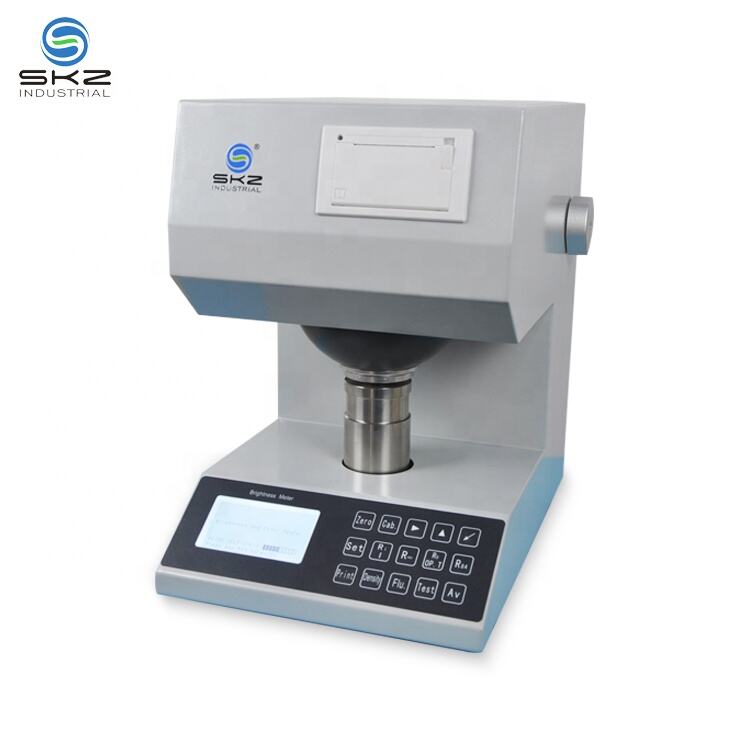How Moisture Meters Work: Pin vs Pinless Technology and Core Principles
The science behind moisture detection in building materials
There are basically two ways moisture meters work these days: one uses pins to measure electrical conductivity, and the other detects changes in electromagnetic fields without touching the material (the so-called pinless method). Different materials react to moisture in their own way. Dry wood tends to block electricity pretty well, usually showing resistance around 0.5 to 2.5 kiloohms when moisture is about 10-12%. But if concrete gets soaked, it becomes a much better conductor of electricity, sometimes over four times as efficient as when it's completely dry according to recent research from the Building Material Electrodynamics Review in 2024. For materials that don't conduct electricity at all, like fiberglass insulation, we need those pinless meters instead. These devices send out radio waves and look for disruptions caused by water since water has this really high dielectric property of about 80, whereas most building materials only have values between 2 and 5.
Factors influencing accuracy in real-world conditions
Getting accurate measurements really comes down to three main things: what material we're testing, ambient temperature conditions, and how well maintained the sensors are. The pinless meters tend to miss quite a bit when dealing with dense concrete around 80 pounds per cubic foot, often showing about 12% less moisture than actually present. And let's not forget temperature variations matter too; if it gets too hot or cold within roughly 18 degrees Fahrenheit difference from standard conditions, this can throw off readings by nearly 9%. Corrosion on metal pins is another problem area causing falsely low numbers sometimes reaching as high as 21% discrepancy. Regular calibration becomes essential because over time these devices drift away from their original settings at about 0.3% moisture content loss each month when used frequently. That's why checking them every three months against those official NIST standards makes good sense. There are plenty of other issues to consider too like those pesky air pockets hiding behind drywalls that mess with almost 4 out of 10 pinless tests, plus certain oil based coatings will mess with traditional pin meters giving misleading results upwards of 17% moisture content differences.
Choosing the Right Moisture Meter: Matching Type to Material and Application
Pin vs Pinless: Pros, Cons, and Ideal Use Cases for Each
The pin type meters give specific moisture readings for different materials such as wood and drywall by checking how much resistance there is between the probes. But here's the problem they cause tiny holes when testing surfaces something no one wants to see on nice finished floors. That's why many people turn to pinless options instead. These newer devices scan with electromagnetic waves and can detect moisture about three quarters of an inch below the surface without damaging anything at all. Flooring professionals seem to agree too most inspections these days go with the pinless approach. A recent study from 2025 showed that nearly four out of five inspectors choose them for checking moisture levels before installing new flooring materials.
Universal Scales vs Species-Specific Calibration: Resolving the Accuracy Debate
The universal scale system from 0 to 100% makes it easier when dealing with multiple materials, though these devices don't account for differences in wood density. When we calibrate specifically for different species of wood, our readings match up better with those standard EMC tables everyone references. Tests show this approach cuts down on mistakes during hardwood floor installations by around one third. Restoration work often involves several different materials at once, so newer hybrid meters that can switch between calibration settings are becoming popular. These tools manage to stay within plus or minus 0.8 percent accuracy whether measuring wood, concrete, or drywall while still being versatile enough for most jobs.
Maximizing Measuring Range and Coverage Across Diverse Materials
What defines a wide measuring range in professional moisture meters?
Most professional moisture meters work within a range of about 5 to 40 percent moisture content, which makes them pretty versatile for checking things like wood, concrete, and drywall. The better quality instruments come equipped with those fancy dual depth pinless sensors that can penetrate up to 1.5 inches deep, plus they scan at multiple frequencies so they adapt better when there are changes in material density. For folks working specifically with wood, many models focus on measuring between 6 and 30 percent moisture levels. Concrete workers need something different though their devices usually detect much lower ranges around 0.5 to 7 percent with really tight tolerances of plus or minus 0.1 percent. To keep everything consistent whether testing something absorbent like wood or something less porous manufacturers rely on these special calibration blocks that trace back to National Institute of Standards and Technology standards.
Benefits of broad range capability in multi-material environments
Using broad range meters means contractors don't have to swap out equipment mid-inspection, which saves them around 32 percent of their time according to recent construction material studies from 2024. When checking wood structures that sit next to concrete floors, these meters really shine. Most wood should be between 12 and 18 percent moisture content, whereas concrete needs to stay below 4%. What makes these devices so valuable is how they spot hidden problems nobody else would notice. For instance, sometimes the surface might read just 8%, but down inside the material it could actually be holding over 25%. That kind of discrepancy usually points to ongoing water issues that regular eye checks completely miss out on.
Ensuring Long-Term Reliability Through Calibration and Verification
Why calibration is critical for sustained moisture meter accuracy
According to a recent study from 2024 on sensor performance, moisture meters tend to lose accuracy over time with an average drift of around 8 to 12 percent each year because their sensors get worn down and exposed to different environments. If these devices aren't calibrated regularly, they start giving wrong readings. Sometimes they miss serious problems like wood rot forming behind walls when errors reach up to 15%. Other times they falsely indicate damage that doesn't exist, leading to expensive fixes ranging from $740 to as much as $1,200 for each false alarm. That's why professionals need to check and adjust their moisture meters periodically. This matters especially after floods when assessing water damage or during new floor installations where getting accurate moisture levels is absolutely crucial for preventing future headaches.
NIST-traceable standards and moisture calibration blocks explained
Manufacturers at the top of their game depend on calibration blocks that can be traced back to NIST standards, these blocks come with confirmed moisture levels ranging from 4 to 18 percent MC, which helps create reliable reference points for quality control. The blocks need to go through annual recertification inside controlled humidity environments where the relative humidity stays stable within plus or minus 2 percent, this process keeps everything aligned with those important ASTM D4444 international standards. According to field studies, when companies implement these NIST traceable methods across multiple devices, they see around a 70 percent drop in measurement differences. A recent look at compliance practices in 2023 backs up these findings.
Real-World Applications: Moisture Meters in Construction and Woodworking
Preventing Flooring Failures with Pre-Installation Moisture Testing
Doing moisture tests before installation stops around 85% of all flooring problems according to a study from 2023 looking at 1,200 different construction jobs. These pinless meters let workers scan concrete floors and what's underneath without damaging anything, finding those sneaky moisture spots that mess with adhesives and lead to warped floors later on. When compared just to regular visual checks, using these meters cuts down on callbacks by about two thirds. A recent test over six months with fifty different flooring companies showed exactly that kind of improvement in their work quality and customer satisfaction rates.
Mold and Water Damage Inspections: Early Detection Saves Costs
Moisture meters detect water intrusion with 0.1% precision before mold becomes visible, allowing early repairs that cost 40% less than full remediation. Restoration professionals use dual-depth pin meters to map moisture gradients in drywall and insulation, successfully preventing structural decay in 92% of early-intervention cases in flood-affected buildings.
FAQs
What are the main differences between pin and pinless moisture meters?
Pin moisture meters measure electrical resistance between metal probes in the material, while pinless meters detect changes in electromagnetic fields without physical contact. Pin meters are suitable for detailed measurements at specific depths, whereas pinless meters avoid surface damage and are great for broad surface scanning.
Why is calibration important for moisture meters?
Calibration ensures that moisture meters provide accurate readings by compensating for sensor drift and environmental exposure over time. Regular calibration, especially using NIST-traceable standards, prevents costly errors in measurement and incorrect assessments.
Can moisture meters be used on any type of building material?
While moisture meters are versatile, their effectiveness depends on the material being tested. Pin meters are ideal for materials that allow probe insertion, like wood, while pinless meters are suited for materials like drywall or concrete that benefit from contactless scanning.
How do professionals maintain long-term reliability of moisture meters?
Professionals ensure reliability by conducting periodic calibration checks against the manufacturer-specified reference materials and maintaining their devices according to NIST standards. Regular calibration adjustments are made if discrepancies occur.
Table of Contents
- How Moisture Meters Work: Pin vs Pinless Technology and Core Principles
- Choosing the Right Moisture Meter: Matching Type to Material and Application
- Maximizing Measuring Range and Coverage Across Diverse Materials
- Ensuring Long-Term Reliability Through Calibration and Verification
- Real-World Applications: Moisture Meters in Construction and Woodworking
- FAQs

